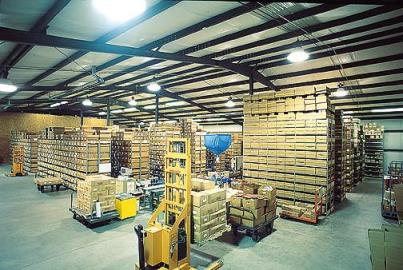In my previous post, I explained various basic Dynamics NAV terminologies related to warehousing.
In this post, we will continue to explore the levels of warehouse management available within NAV and how these affect various processes.
Following are the overall models available within the warehousing module of Dynamics NAV
Basic Warehousing
This is the simplest method available that doesn’t require any separate warehousing processes. Unlimited warehouses can be created as required. All the stock within a warehouse is available to be used for various operations.
Warehousing functions are embedded into the relevant documents. For example, a sales shipment can be processed from the sales order screen without having to process any warehousing function.
Bins can be used to categorise stock into various physical locations without changing the overall stock availability within a warehouse.
This method is suited to organisation that have:
- Minimum segregation of duties from a systems perspective
- A small warehouse
- Relatively low volume of orders (so that it is okay to process one order at a time)
- Low level of system integration when it comes to stock control
- Low level of computer literacy among warehouse staff (so that orders can be processed by office staff and warehouse personnel mainly work from physical paperwork generated by the system)
Intermediate Warehousing
In this model, warehouse documents are generated from the orders and warehouse staff can access these documents to perform the required functions.
Individual warehousing functions can be turned on based on specific needs, such as:
- Require Pick: A pick document is generated and warehouse personnel are expected to use the pick document in the system to ship the outbound orders. Only one pick can be generated per order so the volume of the orders is still relatively reasonable.
- Require Shipment: With this method of configuration, it is expected that the warehouse supervisor manages the outbound orders via a “delivery run” process. Orders are accumulated on the warehouse shipments screen and multiple orders can be consolidated into one shipment based on Freight companies or multiple customer orders. A large volume of orders can be easily processed using the warehouse shipments function.
- Require Put-Away: This is the warehouse document for all the inbound orders. One put-away document will be created and processed per order.
- Require Receive: This is where multiple inbound orders can be received using the same warehouse documents. This method works best, if suppliers consolidate various orders into a single delivery and these need to be managed on a single screen.
It is assumed that the warehouse supervisor has access to the system, this level of configuration allows them to effectively manage and control the processing of orders. Financial information about the orders is not available on these warehouse documents. When these warehouse documents are processed, relevant documents automatically get posted. For example, posting an inventory pick for a sales order will post the sales shipment when processed. Bins can be used to manage the stock within the warehouse but under this model, all the stock within the warehouse is available for the orders. If stock is to be quarantined, it needs to be transferred to a separate warehouse.
This method is suited to organisation that have:
- Some level of segregation of duties from a systems perspective
- Relatively large warehouse
- Reasonable volume of orders
- Reasonable level of system integration
- Reasonable level of computer literacy among warehouse staff
Advanced Warehousing
This is the model where a maximum level of stock control is available. Warehouses can be segregated into various areas dedicated to different types of operations such as: Shipping Zone; Receiving Zone; and Production Zone. Stock within these dedicated areas is not available for any other operation. A Quarantine Zone can also be created to manage the stock that needs to be validated before it is available for use.
Complete Bin control is also available using this method so that wave picking can occur and the system suggests stock to be placed into the most effective pick path.
This creates a maximum level of segregation of duties: office staff enter the orders; the warehouse supervisor manages the warehouse documents based on orders and issues various internal warehouse instructions (Pick, Put-away, bin to bin movement etc.,) to warehouse workers; and the warehouse workers execute the pick, put-away and movement instructions.
This method is suited to organisations with a large volume of orders and huge warehouses with dedicated areas for various operations. Mobile devices can be easily integrated with this model so that stock can be scanned and processed easily according to the instruction issued.
In my next post, I will take various scenarios and explain how the processes will differ based on the level of warehousing chosen.
Happy Reading :-)







